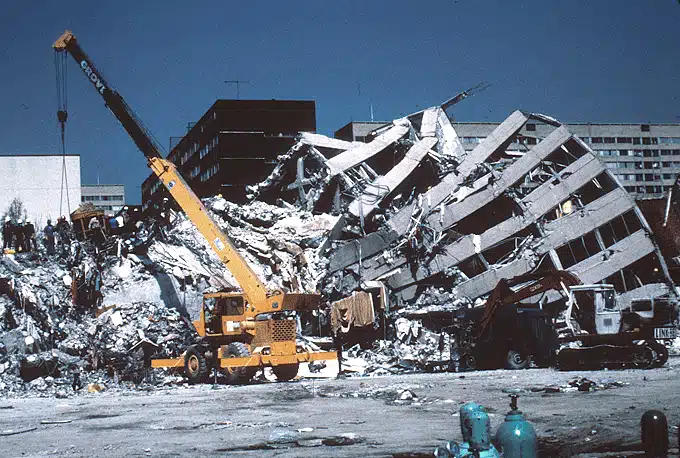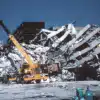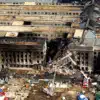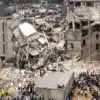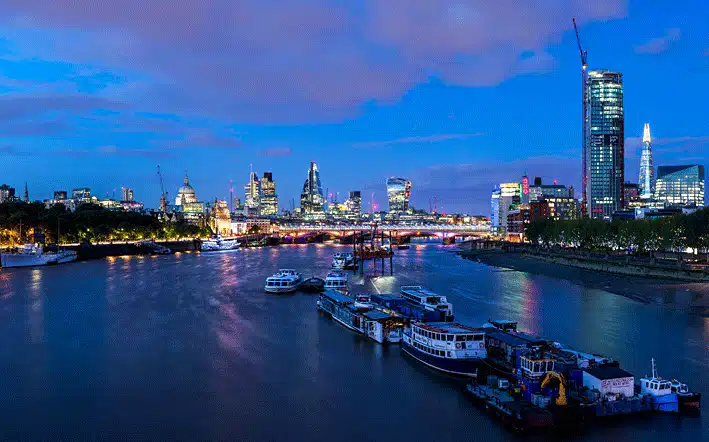words Alexa Wang
When a building or structure collapses, a town, village or city can be left flooded with rubble which can then leave a devastating impact on the community.
We look at some of the world’s biggest building collapses — from disastrous sweatshops to the destruction of the World Trade Center in New York.
The World Trade Center, New York City (2001)
One of the most well-known building collapses around the world is one that happened on the 11th of September 2001 — caused by an unforeseen terrorist attack. The story of 9/11 has lived on, remembering those who lost their lives and were taken from their families.
Although the story of the collapse is commonly told, one thing you probably are unaware of is how the New York City Council — and the government — got rid of the amount of rubble that was left on the streets of one of the most famous cities in the world.
Fresh Kills Landfill was opened in 1948 and was once the largest landfill and man-made structure in the world. It temporarily re-opened after the World Trade Center (WTC) collapsed to help with the amount of rubble that occupied the streets of New York. Often referred to as Ground Zero, the site where the WTC was destroyed sent over 1.6 million tonnes of material to the landfill for sorting — where more than 1,600 personal effects were found.
The materials that were transported to the landfill site sadly contained human remains, and 1.7 million hours of work was carried out by detectives and forensic evidence specialists who tried to recover remains from the debris — 4,257 remains were found, but only 300 of these were identified.
There were four contractors chosen to help with the clean-up including Tully’s, who’s entire workforce worked 24 hours each day, seven days a week to help remove the tremendous amounts of debris — trucking in up to 500 loads of waste per day. Not only did the debris need to be removed, but pipes that once ran under the structure needed to be repaired and 300 people were involved in this process, whilst another 250 individuals added rubble to the cleaning pile.
Across all four contractors, an average of 9,000 tonnes of wreckage were moved each day and taken to two piers (one at the Hudson River and another at the top of Manhattan). This was then lifted by a crane into 3,000 tonnes capacity bags. In terms of hazardous waste, from freon to biomedical.
The clean-up took a total of 8 months and 19 days to clean up, with 1.2 million tonnes of debris collectively.
Rana Plaza, Bangladesh (2013)
A lot of factors imposed the collapse on the Rana Plaza — one major influencer being that the building was built on top of a filled in pond, which determined its structural strength. The building was also three floors above the permit it was given by authorities. According to reports by the BBC, the local authorities used bulldozers to remove the waste that was left in the area.
Bangladesh isn’t taking a strong stand on its waste problem as a nation, but there are initiatives in place that are encouraging it to change its ways. Producing around 22.4 million tonnes of waste per year (2012), UNICEF has created recycling programmes to reduce the amount of waste — the Japan International Corporation Agency is also implementing a strategy that will help the country’s issue on waste.
Zolitude Shopping Centre, Latvia (2013)
Being in the middle of a building collapse is not something you plan on — especially when you’re doing your shopping. The result of a design flaw resulted in the roof of the Zolitude Shopping Centre collapsing, leaving 54 fatalities and 55 non-fatal injuries — after three known collapses in the same building.
Latvia seems to be taking a step in the right direction. After the collapse, the mayor insisted that all buildings of the same company were inspected — to ensure that nothing like this would occur again. Although becoming an independent nation, Latvia has pledged to enforce EU environmental directives.
Bhimsen Tower, Nepal (2015)
Unlike previous mentions in our list, the Bhimsen Tower in Nepal, often referred to as Dharahara, collapsed due to an earthquake that occurred in the surrounding area. The tower was a nine-story structure, and was completed in 1832 as a gift to Queen Lalit Tripura Sundari — the country’s military forces would begin to use this as a watch tower.
According to research, 1,435 tonnes of municipal solid waste is generated every day in Nepal. There is no clear stand on how Nepal wishes to tackle its waste problem, but it is becoming an issue for its citizens — with many reports suggesting that waste being dumped is having an effect on public health.

